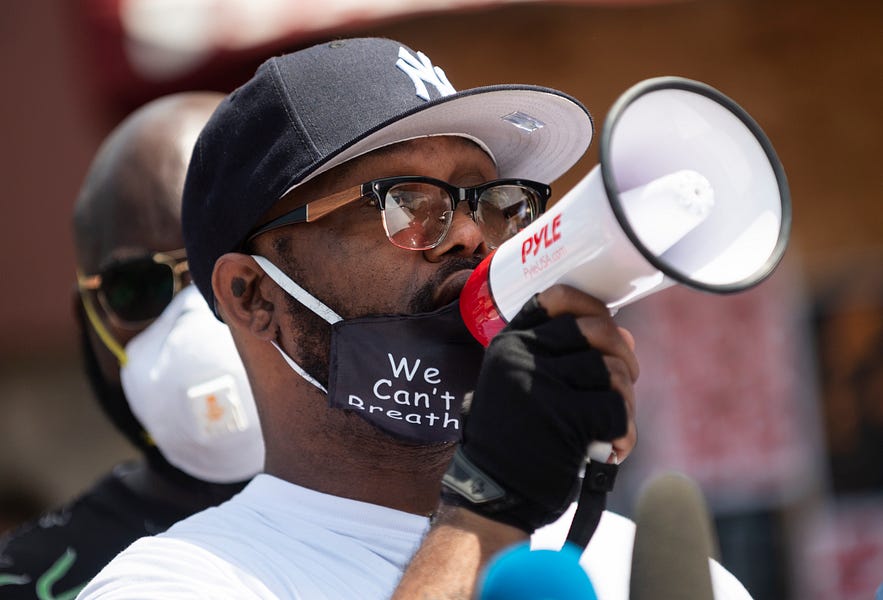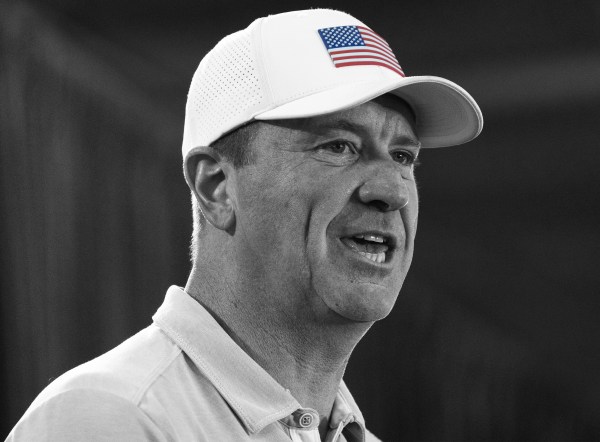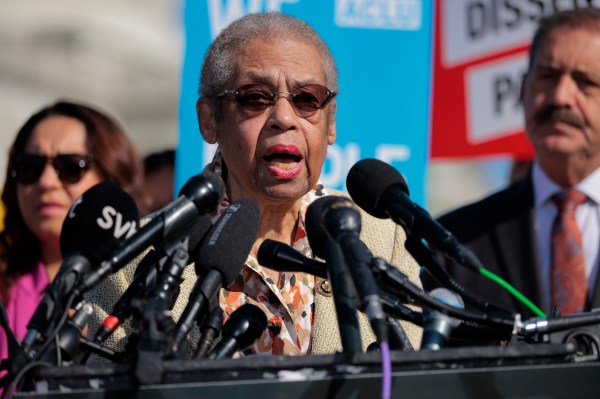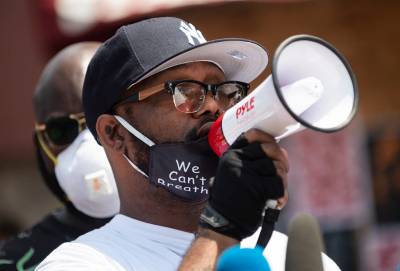Editor’s note: On June 3, Minnesota Attorney General Keith Ellison announced that he was amending the charges against Derek Chauvin to include second-degree murder. Here is Ted Sampsell-Jones’s follow-up piece about what that means for the prosecution.
Last week, Hennepin County Attorney Mike Freeman filed third-degree murder and second-degree manslaughter charges against Derek Chauvin, the Minneapolis police officer who knelt on George Floyd’s neck for nine minutes, even as Floyd lay dying. Many people who have watched the video, or read a description of it, might assume that a conviction will be easy or that Freeman should have filed more serious charges. Floyd was not resisting, and in fact was begging for his life. Chauvin refused to relent—even after his partners suggested they move Floyd, even after Floyd passed out and died. There is no justification for Chauvin’s actions. The degree of cruelty and callousness he displayed are astounding. I think the murder and manslaughter charges filed by Freeman were appropriate, and given the video evidence of Chauvin’s brutality, a conviction is likely.
Nonetheless, for both factual and legal reasons, this prosecution is more complicated than it may seem. Chauvin was rightfully fired, Floyd’s family will easily win a civil judgment for excessive force, and Chauvin could be found guilty of federal civil rights crimes—but it is less certain that Chauvin will be convicted of homicide under Minnesota law. There is a large legal space between the definition of excessive force and the definition of homicide.
Chauvin will raise some colorable defenses. In part, these defenses will work by exploiting unfortunate indeterminacies in Minnesota law. They don’t need to be powerful or compelling to work. They need only be plausible enough to raise a reasonable doubt. For that matter, in order to avoid a conviction and hang a jury, they need only to be plausible enough to raise a reasonable doubt in the mind of a single juror. You may find these defenses farfetched, but if one contrarian juror disagrees, Chauvin will not be convicted.
First, Chauvin may contest that he caused Floyd’s death. At first blush, in light of the video, that may seem absurd. It looks obvious that Chauvin asphyxiated Floyd by kneeling on his neck. But the preliminary medical examination released on Friday was a bombshell. It found no physical evidence supporting asphyxia. The report suggests that Floyd’s death was “likely” caused by some combination of underlying heart issues, possible intoxicants, and police restraint. Floyd’s family countered by releasing a competing autopsy result on Monday. It concluded Floyd did indeed die of asphyxia.
Shortly thereafter on Monday evening, the medical examiner issued a more complete autopsy report. It classified the death as a homicide, and listed the cause of death as cardiopulmonary arrest with law enforcement restraint as a contributing cause. But it also noted that Floyd had underlying heart conditions—and that he was intoxicated on fentanyl at the time of death and had recently ingested methamphetamine. Both of those drugs can cause or contribute to acute cardiopulmonary events. The presence of multiple contributing causes muddies the waters.
Autopsy results aside, other evidence may undermine causation. The criminal complaint states that Floyd began saying he could not breathe and fell to the ground before Chauvin kneeled on him. Video evidence supports this—it shows that Floyd was under distress before Chauvin even arrived. Perhaps the officers on the scene initially believed that Floyd was feigning a medical problem to avoid arrest. In retrospect, they were obviously wrong. But as far as Chauvin is concerned, there is at least some evidence that Floyd began having an acute medical event before Chauvin ever touched him. Before Chauvin even arrived at the scene, another officer drew a gun and pointed it at Floyd. That undoubtedly caused an extreme level of fear in Floyd, and it could have triggered the cardiac episode, especially when combined with fentanyl and methamphetamine.
The evidence of intoxication will play an important role. The 911 caller reported that Floyd was “awfully drunk,” was “not in control of himself,” and was “not acting right.” That assessment is now bolstered by the autopsy results. Being intoxicated does not justify kneeling on someone’s neck for almost nine minutes. But the presence of both fentanyl and methamphetamine does bear on causation, so the evidence of Floyd’s drug use will have to be admitted at trial. Once it is admitted, it may subtly affect the jury’s sympathies.
All of this medical evidence will be the subject of expert testimony at trial. The state will call impressively credentialed medical experts who will opine that Chauvin’s conduct, combined with other factors, caused Floyd’s death. The defense will then call impressively credentialed medical experts who will opine that Floyd’s death was solely or primarily caused by all the other factors. They will likely testify that Floyd’s fatal cardiopulmonary event began before Chauvin arrived at the scene, and that his death was already inevitable by the time Chauvin began applying force.
This battle of the experts will add to the unpredictability of trial. Juries always struggle to weigh competing expert testimony, precisely because jurors lack the expertise needed to determine which expert is correct. Will jurors be sure beyond a reasonable doubt that the state’s expert is right and the defense expert is wrong?
The legal definition of causation may add to the jury’s confusion. Causation is a difficult concept metaphysically and medically—see the recent debates on what deaths are “caused” by covid—in part because complex events have multiple causes. Those difficulties also muddy the legal definition of causation. The jury will be instructed, under Minnesota law, that it must find that Chauvin’s conduct was a “substantial causal factor in causing” Floyd’s death. That definition is somewhat circular, and it raises the question: How substantial is substantial enough?
Attorneys for Floyd’s family said on Monday: “What we know is clear. George Floyd was alive before his encounter with police, and he was dead after that encounter. We believe there is clear proximity between the excessive use of force and his death.” That is all true, but it does not necessarily satisfy the legal definition of causation for homicide.
In short, the medical evidence may be somewhat mixed, and jurors will struggle to weigh the testimony of dueling experts. The legal standard for causation is inherently vague, and vague legal standards are hard to apply. My own tentative view, based on what we know so far, is that even if Floyd began experiencing medical distress before Chauvin touched him, Chauvin’s brutality was a substantial contributing cause. But there is already substantial evidence suggesting a contrary view, and other evidence may come to light. It may not be easy for prosecutors to prove causation beyond a reasonable doubt.
Chauvin’s defense could also contend that he lacked the requisite mental state for the charged offenses of third-degree murder and second-degree manslaughter. These charged offenses, defined by Minnesota statute, are drawn from the old common-law offenses of “depraved heart” murder and involuntary manslaughter. Like many concepts in American law, these crimes were inherited from the common law, developed in England over hundreds of years before being adopted by American colonies and states. Relatively early on, judges divided homicide into two categories: murder and manslaughter. Murder was punished by death, whereas manslaughter was eligible for the “benefit of the clergy,” which spared the defendant’s life and imposed lesser punishment.
Speaking somewhat roughly, murder meant intentional killings, while manslaughter meant accidental but still wrongful killings. Over time, common law judges expanded murder to include some accidental killings. For example, in 1666 a blacksmith named John Grey killed his insubordinate servant by striking him in the head with an iron bar. Grey claimed he was not guilty of murder, since he had intended only to discipline the servant. The English court disagreed. Grey’s conduct was so outlandish, the court said, “it is all one as if he had run him through with a sword.” Along these lines, common-law judges over time defined one type of murder as “depraved-heart” murder, meaning unintentional killings caused by outrageously dangerous conduct. Expanding murder in this way, to include some unintentional killings, blurred the lines between murder and manslaughter.
Those same definitions of murder and manslaughter remain in Minnesota today (though we use the phrase “depraved mind” instead of the more traditional “depraved heart”). Many states have abandoned the old common-law definitions as archaic and unworkable, but Minnesota unfortunately has not. The relevant statutes, which are largely unchanged since Minnesota became a state, retain the old English definitions, including “depraved mind” for murder and “culpable negligence” for manslaughter.
Over time, the Minnesota Supreme Court has attempted to clarify the definitions, with only limited success. The court has said third-degree murder covers cases involving “the unintentional taking of human life by an act evincing a wanton and reckless disregard of life.” It has said that second-degree manslaughter covers killings caused by “gross negligence coupled with the element of recklessness.” Those definitions are pretty vague, to say the least. Minnesota’s pattern jury instructions, which incorporate a mix of terms from statutes and interpreting case law, are only somewhat better. Chauvin’s jury will be told that he is guilty of murder if the conduct he engaged in was “eminently dangerous” and “committed in a reckless or wanton manner with the knowledge that someone may be killed.” It will be told that he is guilty of manslaughter if he took an “unreasonable risk and consciously took a chance of causing death or great bodily harm.”
One problem is that these definitions are very similar. Some have argued that the two crimes are essentially identical because both are ultimately defined by recklessness. If you squint, you may see daylight between the two, but both crimes are stated in vague, general terms. Indeed they are so vague that they arguably border on unconstitutionality.
After studying the Minnesota statutes and cases, my criminal law students often express exasperation—I don’t understand what these crimes mean. All I can tell them is: It’s a matter of degree. Both crimes cover unintentional homicides caused by risky, dangerous acts. Accidental deaths caused by merely negligent behavior are not homicide at all. At some point, if the degree of negligence is more extreme, it crosses the blurry line into manslaughter. And at some further point, when the defendant’s conduct is even more outrageously risky, it crosses another blurry line into murder. It’s a judgment call. Jurors get to decide, and there’s no telling what they’ll do in any given case.
If law students struggle with these definitions, jurors struggle even more. They are given definitions of crimes that are clumsy legalese rather than plain English. Eighteenth century English judges were familiar with words like “wanton,” but jurors today are not. They struggle to apply definitions they cannot understand, leading to confusion and mistakes. In the trial of Officer Mohammed Noor, the Minneapolis police officer who shot and killed Justine Damond after she called to report what she thought was a woman being assaulted in an alley, jurors quickly reached a verdict on third-degree murder but struggled to reach unanimity on second-degree manslaughter. They apparently misunderstood the definitions, thinking manslaughter was harder to prove than murder. Their mistake was unfortunate but understandable. The problem is the law itself.
In short, the broad and general definitions of depraved-heart murder and involuntary manslaughter were likely developed precisely because they allowed flexibility. But that sort of discretion also leads to inevitable uncertainty (as well as disparate and unfair results). In any prosecution involving these charges, it is impossible to predict what a jury will do. That is no less true in Chauvin’s case.
Chauvin’s defense will contend that he lacked the requisite mental state for either murder or manslaughter. His defense will claim that, even if Chauvin behaved unreasonably, it did not rise to the level of homicidal recklessness because he was not aware that Floyd was about to die. He will claim that he thought Floyd was resisting arrest, and perhaps as part of his resistance, Floyd was faking claustrophobia and shortness of breath. He will claim that he didn’t realize the truth until it was too late.
Again, personally, I think the video evidence should easily put the lie to Chauvin’s defense. Any reasonable human knows that kneeling on someone’s neck while that person is pleading “I can’t breathe” presents some risk of death or great bodily harm. And Chauvin’s conduct, even if it was not intended to kill, is precisely the kind of immoral and outrageous conduct that depraved-heart murder was intended to cover.
Nonetheless, the vagaries of the law render the result unpredictable. This defense may work precisely because it will require the jury to exercise difficult judgments in the legal gray areas of these common-law crimes. Reasonable jurors may disagree about whether Chauvin’s behavior constitutes murder-level recklessness or mere manslaughter-level recklessness—even assuming they are able to discern any difference between those two. And at least one juror may have a reasonable doubt about whether Chauvin’s conduct met the definition of homicidal recklessness at all.
Finally, in addition to the usual definitions of murder and manslaughter, the jury will probably also be instructed that special rules apply to police. The jury will be told that it should evaluate Chauvin’s conduct “without the benefit of hindsight” and that it should give “due regard for the pressures faced by police officers.” In essence, the jury will be told that, compared with an ordinary citizen charged with the same crime, they should be extra careful before condemning Chauvin.
These principles of officer deference are borrowed from civil excessive force cases, and it is unclear whether they are properly applied in criminal cases. They have no real basis in Minnesota statute, and I would say these special instructions should not be given. Nevertheless, these special instructions will be requested by the defense, and they will probably be given again in this case as they have in other prosecutions of police officers in Minnesota.
Rightly or wrongly, telling jurors that they should be slower to condemn police reduces the likelihood of conviction. It is another hurdle for prosecutors to overcome.
Sunday night, Gov. Tim Walz announced that Attorney General Keith Ellison will take over the case from County Attorney Freeman. That was the right move. It is an understatement to say that Freeman has lost the trust of some portions of the community. His press conference last week was a disaster. People were already starting to suspect—wrongly in my view—that Freeman was planning to tank the case. Bringing Ellison in has lessened that suspicion.
But no one should expect miracles. Regardless of which elected official is in charge, the case will still be litigated in the courtroom by the line prosecutors. The line prosecutors in the Hennepin County attorney’s office are highly skilled and experienced, and they will probably still have the most control over litigation strategy. Also, do not overstate the importance of lawyering. While lawyers can do better or worse with strategy, this case will ultimately be won or lost based on the state of the evidence. The medical evidence will be what it will be, and no prosecutor can change that.
Now that Ellison has taken over, some are expecting and hoping that he will increase the charges against Chauvin to include second-degree intentional murder. That may happen, but that charge will be even harder to prove. Rather than requiring awareness of a risk of death, it requires a conscious desire to cause death. Reasonable people can differ on this, but intentional murder is not the most plausible interpretation of the video. Rather, the most plausible interpretation is that Chauvin’s desire was to subdue Floyd, that he used grossly excessive force to do so, and that Floyd’s death was an unintended consequence of his brutality. Chauvin demonstrated paranoia and a pathological desire to maintain dominance in that situation, but that does not necessarily equate to a conscious desire to kill.
You may disagree—perhaps you see intent to kill when you watch the video—but consider this: Officer Noor pulled out his revolver and shot Justine Damond in the chest from a few feet away, and the jury still did not believe that he intended to kill her. In fact, while as mentioned above, he was convicted of third-degree murder but he was outright acquitted of second-degree murder. Shooting someone in the chest is more likely to cause death than kneeling on their neck. If the jury acquitted Noor unanimously, what makes you think a jury would be unanimous in the other direction in Chauvin’s case? In light of the Noor verdict, prosecutors’ initial decision not to pursue intentional murder charges here is understandable.
In the alternative, Ellison could file second-degree felony murder charges. Under the felony murder doctrine, a defendant is guilty of murder if he kills another, even unintentionally, while committing a felony. In Minnesota, unlike most states, assault can serve as a predicate felony. But charging felony murder, while it will absolve the prosecution of responsibility to prove depraved-heart recklessness, will not solve the causation problem. And although felony murder is nominally a more serious statutory offense, it is punished the same as third-degree murder under the Minnesota Sentencing Guidelines. Felony murder charges could make a conviction marginally easier, but it will not get Chauvin any more time in prison than a third-degree conviction.
Some are also hoping and expecting that Ellison will file charges against the other three officers. But proving that they are accomplices to murder will be even harder than proving Chauvin committed murder. In order to be guilty as an accomplice to murder, ordinarily a defendant must both aid the murder and also intend to aid the murder. Minnesota law states that mere presence at the scene of a murder, and even mere passive acquiescence, are insufficient.
In fact, Minnesota law on accomplice liability is arguably more stringent than in most states. Although the case law is somewhat inconsistent, the Minnesota Supreme Court has held that accomplice liability requires a “high level of activity on the part of the aider and abettor,” such that the accomplice’s conduct helped the principal “take a course of action which he might not otherwise have taken.” In short, it is not enough if other officers watched and failed to intervene while Chauvin killed Floyd. The prosecution would have to show that they provided some significant level of assistance to help him commit a crime he might not have completed on his own. There are also technical problems with applying accomplice liability to unintentional homicides such as third-degree murder and second-degree manslaughter.
There may be other, lesser charges to pursue against the other officers. But even charging the other officers could strategically undermine the prosecution’s case. In terms of presenting a clear and simple story to the jury, it might be better to argue that Chauvin and Chauvin alone was responsible for causing Floyd’s death. Spreading guilt around might weaken the case against Chauvin, who is by far the most culpable. Convicting Chauvin will be prosecutors’ top priority, and that will be hard enough without adding even more complication to the case.
A conviction is still likely. Whatever trial tactics the defense will use, it cannot prevent the jury from seeing video of Chauvin kneeling on Floyd’s neck while he died. Even the most skilled defense attorneys cannot avoid the outrage that jurors will feel when they see that video evidence—and they will likely see it over and over again at trial. Despite the possible defenses discussed above, a jury will likely convict Chauvin, at least of manslaughter if not murder.
But do not assume that a conviction is a foregone conclusion.
Reading between the lines of Freeman’s public statements and also the criminal complaint itself, it seems to me that prosecutors know this will be a harder case to prove than it appears on the surface. I believe they sincerely want to win this case, and they will do everything they can to convict Chauvin. They may not succeed.
As a defense attorney and law professor, I have somewhat conflicted feelings about this case. For example, I think Minnesota’s felony murder doctrine is an abomination, and it should be abolished. Nonetheless, I also recognize that it could be a powerful tool here for prosecutors. More generally, like many others who live in Minneapolis, I am hopeful for a conviction in part because I hope to avoid further violence here. At the same time, I question whether that is a good reason.
At the end of the day, I think the video evidence is compelling both morally and legally. Chauvin engaged in outrageous and totally unjustified conduct. He should be found guilty of homicide. I think any reasonable juror will reach that result. But at this point, all these assessments are somewhat tentative, and they may change as the investigation proceeds and new information comes to light. Already, there are apparent problems and complications in this case. Regardless of what I think the right outcome is, we all must prepare for the possibility of an acquittal—and what that will mean for Minneapolis and the entire country.
Ted Sampsell-Jones is a professor at the Mitchell Hamline School of Law.
Photograph of Terrence Floyd, brother of George Floyd, by Stephen Maturen/Getty Images.






Please note that we at The Dispatch hold ourselves, our work, and our commenters to a higher standard than other places on the internet. We welcome comments that foster genuine debate or discussion—including comments critical of us or our work—but responses that include ad hominem attacks on fellow Dispatch members or are intended to stoke fear and anger may be moderated.
With your membership, you only have the ability to comment on The Morning Dispatch articles. Consider upgrading to join the conversation everywhere.